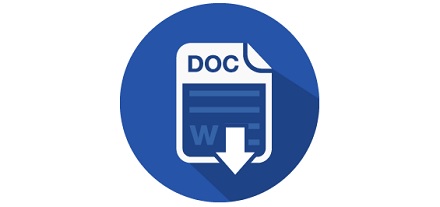Efisiensi Pemasaran Sapi Potong di Kecamatan Takisung Kabupaten Tanah Laut Provinsi Kalimantan Selatan
DOI:
https://doi.org/10.33474/jase.v2i1.13036Keywords:
Marjin pemasaranfarmer’s share, Efisiensi pemasaranAbstract
Takisung District is one of the centers for beef cattle in Tanah Laut Regency. In creating an efficient and profitable marketing system for both farmers and consumers, farmers must choose short marketing channels. This study aims to identify the shape of the beef cattle marketing channel, determine the costs, benefits, margins, and farmer's share, and the marketing efficiency received by beef cattle producers. This research was conducted in Takisung District, Tanah Laut Regency. The sample villages were chosen deliberately, namely the three villages with the highest number of farmers (Source Makmur Village, Takisung Village, and Gunung Makmur Village). The sample of farmer respondents in each village was chosen randomly in proportion, with a total sample of 30 farmers. To select local traders and cutting traders, the snowball sampling method was used. The study was conducted from March to May 2020. The results showed that there were 4 forms of beef cattle marketing channels, namely Channel I (breeders – consumers), Channel II (breeders – slaughterers-consumers), Channel III (breeders – local traders – consumers), and Channel IV (breeders – local traders – slaughterers – consumers). Furthermore, costs, profits, margins, and farmer's share per head of cattle as well as marketing efficiency for each marketing channel, namely channel 1 with costs, profits, and marketing margins of Rp.0 and farmer's share get 100% results. Channel 2 with a cost of Rp. 570,000, a profit of Rp. 4,950,000 and a margin of Rp. 5,520,000 and a farmer's share with a yield of 73.74%. Furthermore, channel 3 with a cost of Rp.243,000, a profit of Rp.457,000, and a margin of Rp.700,000, and farmer's share obtained a yield of 95.39%. Finally, channel 4 with a cost of Rp. 1,766,000, a profit of Rp. 5,124,000 and a margin of Rp. 5,920,000 and farmer's share getting 71.84% results. Economically, beef cattle marketing can be said to be relatively efficient in all marketing channels. The most efficient marketing channels are channel 1 and channel 3.References
Anindita, R. (2004). Pemasaran Hasil Pertanian. Papyrus : Surabaya.
Badan Pusat Statistik. (2017). Statistik Kabupaten Tanah laut. Badan Pusat Statistik.
Cahyono, W, Kusnandar, dan Sri Marwanti. (2013). Analisis Efisiensi Pemasaran Sayuran Wortel di Sub Terminal Agribisnis (STA) Kabupaten Karanganyar. Agribisnis Pasca Sarjana UNS. Vol 1. No 1 : 1-20
Dinas Peternakan Kabupaten Tanah Laut. (2017). Data Statistik Ternak Bersar Sapi Dan Kerbau Tahun 2017. Kabupaten Tanah Laut.
Hanafiah, A.M. dan A.M. Saefuddin. (1986). Tataniaga Hasil Pertanian. Penerbit UI. Jakarta.
Kotler, P. (1980).Marketing Management: Analysis, Planning, and Control. 4th Ed.London: Prentice-Hall, Inc.
Soekartawi. (1993). Prinsip Dasar Manajemen Pemasaran Hasil – Hasil Pertanian. Rajawali Press. Jakarta
Sudiyono, Armand. (2002). Pemasaran Pertanian. UMM Press. Malang
Downloads
Published
How to Cite
Issue
Section
License
JASE: Journal of Agricultural Socio-Economics with a registration number of ISSN xxxx-xxxx (printed) and xxxx-xxxx(online) published by the Department of Agribusiness, Faculty of Agriculture at the University of Islam Malang by applying for copyright and License.
Copyright:
- Copyright in each text is the property of the author.
- The author agrees that JASE has the right to the first license issued with a Creative Commons Attributions-ShareAlike 4.0 International License.
- The author can write the article separately through non-exclusive distribution with other versions related to the article that was first published in the JASE : Journal of Agricultural Socio-Economics.
Licence:
- Attribution: You must give appropriate credit, provide a link to the license, and indicate if changes were made. You may do so in any reasonable manner, but not in any way that suggests the licensor endorses you or your use.
- ShareAlike: If you remix, transform, or build upon the material, you must distribute your contributions under the same license as the original.
- No additional restrictions: You may not apply legal terms or technological measures that legally restrict others from doing anything the license permits.
You are accessible to:
- Share a copy and redistribute this material in any form or format.
- Change and make derivatives of this material for any purpose, including commercial interests.
- The licensor cannot revoke the above conditions as long as the authors comply with the terms of this license.
Â

This work is licensed under a Creative Commons Attribution-ShareAlike 4.0 International License.







_-_Copy.jpg)

